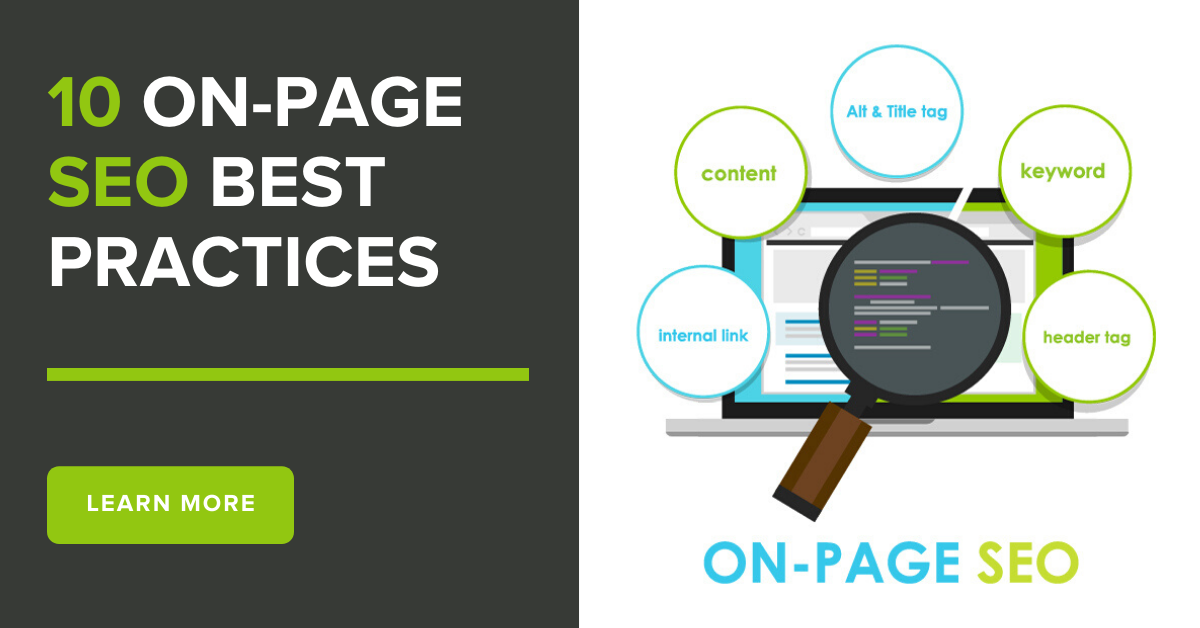
To rank high in Google, optimizing your blog's title is not enough. Google wants to crawl your blog for keywords. A basic SEO strategy makes it easier for Google search engines to index and display your content. Headings are another important area to consider when optimizing a blog's SEO. These allow search engines and readers to navigate your content. Make sure you include keywords or phrases at the start, middle, and ends of every section when using headings.
Meta description
Make sure you use an organic tone in your meta description when writing for SEO blogs. Answer a user's query with your meta description and showcase your high-quality content. Websites that look like spam are a negative impression on users. You'll get more clicks if you write for people and not robots. Here are a few tips to help you write a compelling meta description:
Make it exciting: Include your main keyword within your meta description. Google doesn't consider your meta description when indexing your site, but it helps to attract users' attention. It is important to keep your meta description between 140-161 characters. Make sure you bold the most important words. Your meta description should include a call-to-action, such a link to your site. A great meta description should also include a call to action.
The meta description is an opportunity to advertise your company. It is a great tool to grab a user's interest and persuade him to click on the link. A well-written meta description can help increase site traffic and sales. To encourage users, a call for action should be placed at the end. Your meta description can be rendered useless if your description is too lengthy or contains outdated information.
Meta descriptions can not only be readable, but they can also improve your click-through rate. Properly using the meta description can increase both your organic traffic, and your ranking. Google's search engine results play a small role in the meta description. Your meta description may not be optimized well enough to rank your page on page four, instead of page 1. It is worth adding a meta description to your blog even if it has a low click through rate.
Keywords in title
Focused keywords must be used in the title of SEO blog posts to get the best results. Keywords in the title will let you know the direction and likelihood of your content reaching your target audience. Search engines rank web pages according the keywords that are used within them. These crawlers have improved their technology to better judge the quality of material on the Web. To increase their search ranking, it's important to include targeted keywords within the titles of your articles.
Crossfit training phrases or gyms can be used if you have a gym. Use only one keyword per article. Using too many keywords in the same article can look spammy to the search engines, which makes your content less valuable to your readers. Your articles will rank higher for long-tail keywords than they do for short-tail keywords. Using these phrases is a great way to rank higher for a keyword in Google.
Keep the title of your SEO blog between 60 and 70 characters. The title tag should include the focus keyword as close to the start as possible. Additionally, the chosen keyword should communicate the benefit of your post. Keyword stuffing and boilerplate titles can be dangerous. Google warns against keyword stuffing. You should use a strong focus keyword for your title, and ensure your audience can easily understand the content.
Your keywords should be included in your title. But that's only half of the battle. The title of your article should be at least 60 characters long and not exceed 575 pixels. Your title should live up to the promise it made. Make it easy to read and scan. SEO is about planning. Make sure your title is as effective as possible.
Internal links

There are many ways you can improve search engine optimization (SEO), for your blog or website. Use internal links to direct users on your website to different pages. These links may lead to different products pages or content. This not only enhances the user experience, but also increases the search performance. It is important to remember that internal links are not like backlinks, and readers are unlikely to find them on their own. This can be achieved by using internal links at the right places.
Adding relevant internal links in your blog is an SEO-friendly way to attract and retain readers. Many sites use different styles for their links. It is therefore important to select the appropriate words and anchor text when creating a link strategy. Internal links can be used to increase attention and make your visitor stay longer on your site. Use internal links that link back to relevant content, and provide a solution for the user.
Internal links should always point to the main keyword. Although it is unlikely that Google will penalize you for using exact-match anchor text, you must make sure the anchor text matches the content of the linked page. However, it should not be keyword-stuffed. It is not a good idea to manipulate the anchor text to boost your search engine rankings. This tactic is against Google’s webmaster guidelines. This tactic is far more effective than you might imagine.
Another way to optimize internal links is to create content on topics related to your core service. For example, a landscaping company in Columbus generates 390 searches a month, far less than the search volume for the phrase "best smartphone." You can improve your SEO by strategically including internal links within your blog posts. One way to do so is to anticipate the questions users will ask when they visit your website.
Schema markup
Schema markup can be included in your blog posts to increase your search engine ranking. To create schema markup, visit Google Structured Data Markup Helper. The tool allows you to enter the URL of your website, pick a category and paste the HTML code. This tool creates a tag manipulator as well as a rendered page in new windows. You can click on individual elements and tag them.
There are three types: NewsArticle (TechArticle), Microdata (Microdata). Depending on the content of the post, each type may have a different set flags. NewsArticle is for articles that focus on current events. TechArticle could have flags to indicate the technical content within the article. A HowTo article might have flags that indicate author's technical level and the program used.
Google has made it easier to create schema. You can tag data to see similar content in search results. It is recommended that you use schema markup in your blog posts to build brand awareness. If you are a small business with a local address, schema can be used to advertise your business. You can also promote your business or events using schema. There are many benefits to schema markup being used in SEO blog posts. The links below will guide you through the process of selecting the right schema markup.
You can also use schema to optimize content. Search engines use markup to identify different elements within a site. Schema markup can be used to identify ingredients, instructions steps, and ketogenic diets if you blog about food. Schema markup can also be used to build a review blog. Basically, the more relevant your content is to a user's query, the better off you'll be in terms of search engine rankings.
Copyright for image

It is crucial to verify the permission of any images you plan on using for your SEO blog. Many PR agencies won't share images on their websites. This could mean that you will not be allowed to use the image. To find out who owns the image, contact them directly. In most cases, the owner will give you permission to use their image. These tips will help you comply to the law.
Google images should not ever be used. Before you use an image on your blog, contact the original owner. Google allows you to search for images, but you have to obtain permission to use them. If you're having difficulty finding the image you want, you can request permission from the page hosting it. This will ensure you don't violate any copyrights. The difference between a successful SEO website and one that is blocked by search engines can be made with image copyrights.
Be sure to verify the copyrights of any image on your blog. It is illegal to use images that you find on Google Images. You are discrediting the artist of the image and could face legal consequences if you steal images without permission. If permission is granted by the owner, public domain and fair-use photos can be used. If you still have any doubts, consult an intellectual property attorney.
Images used for SEO blogs must be of the same author and attribute. Images that are humorous or creative are more likely to be used in SEO blogs. However, it is important to check the license terms. Some images are available for free but have certain restrictions. You should not use images unless you are certain of their author. You may be violating the copyright if they are not royalty-free. Even worse, you could face a lawsuit, which will cost you a lot of money.
FAQ
How much does SEO cost?
SEO is long-term investments so you won’t see immediate results. However, it's important to remember that the more people find your site, the more likely it is to rank higher in search engines.
Many factors go into determining the price of each service, such as keyword competitiveness, location, audience size, and competition.
What is On Page SEO?
On-page search engine optimization is what you do on your website to make it rank higher in search engines. On-page SEO covers site architecture, page title, meta tags, image alt text and other aspects. Off-page optimization refers to any activities outside of your website that can improve its ranking. These activities include backlinks and social media shares.
How do you create an SEO strategy?
The first step in creating an effective SEO strategy is understanding what you want to achieve and how you will go about achieving this goal. This allows you structure your content to meet these goals.
The second step is to start working on your keywords. Doing keyword research can give you insights into what people are looking for by analyzing the terms they use. You can then write articles around these topics using this information.
When you write your articles, be sure to include your targeted keywords. You should optimize every article by including images and videos. If possible, you should also link to other related sites.
After writing all your content, you can start optimizing it!
What is a PPC ad?
Pay-per–click ads are text based advertisements that appear at top or bottom on a page.
These advertisements are extremely targeted, meaning advertisers only pay when someone clicks on them.
PPC advertising can be very similar to Pay Per Call marketing, which we will discuss later.
Where can I find my keywords?
To find standard terms for your products or services, you will need to first consider the kind of products or customers you are offering. Once you've got your list of phrases, you can use tools like Google Keyword Planner to see what phrases people are searching for or go directly to popular search engines like Bing, Yahoo, and DuckDuckGo.
What should I know about backlinks
Backlinks are links that point to a webpage on another website. They are one the most powerful tools search engines use to identify the location of a page in search results. Because they prove that others believe your content to be valuable, backlinks are particularly useful. You will need quality backlinks to help you rank high in search results.
Statistics
- 64% of marketers actively create SEO campaigns because they help hit multiple key performance indicators (KPIs), including increasing traffic, helping your site rank for relevant keywords, improving your conversion rate, and much more. (semrush.com)
- : You might have read about the time that I used The Content Relaunch to boost my organic traffic by 260.7%: (backlinko.com)
- Deleting those 10k pages is one of the main reasons that he improved his site's organic traffic by nearly 90%: (backlinko.com)
- And 90%+ of these backlinks cite a specific stat from my post: (backlinko.com)
- 93%of online experiences today begin on search engines. (marketinginsidergroup.com)
External Links
How To
How to choose the right SEO strategy for your business
These are some factors that can help you choose the right SEO strategy for your website.
-
Keyword Research
SEO's primary goal is to rank well for specific terms. Negative keywords should be avoided.
-
Content Strategy
Content marketing is important for all businesses. Websites that sell eCommerce products or services need to be ranked high in search results pages. This drives sales and increases conversions.
Therefore, it is important to create engaging, relevant content that solves or offers solutions.
-
Link Building
Links have a huge impact on your website's ranking in search engines. You need to build valuable relationships with other websites.
-
Social Media Marketing
If you have a strong presence on social networks, you might want to use these channels to promote and market your brand. This will encourage others to share your content by sharing it across these platforms.
-
Website Structure
Although it isn't always possible to rank higher, good design can make a difference. Clear and simple layouts lead to better conversions. Your site must load quickly to ensure users don't leave without completing transactions.
-
Mobile Optimization
Mobile devices account for almost half of internet usage today.If your website isn't optimized for mobile, you could lose out on traffic and potential clients.
-
Local Search
This is when you target local markets and not national ones. You optimize your website to be found in local searches, such as "restaurants nearby me" or "businesses around my area." It is easier to rank locally as people trust recommendations made by family members, friends, and coworkers.
-
Ecommerce Website Development
Ecommerce websites benefit from a range of different types of SEO strategies.For example, they often perform best when they're optimized for both desktop and mobile devices. They can also be ranked higher for long tail keywords.
-
Video Ranking
Video content performs well in search engines. It ranks well in search engines for long queries and receives more shares.
-
Branding
Branding is the process of designing a logo, product names, and messaging that gives your company its own identity and personality. This helps customers know who you are and what your company does.
-
Analytics Software
Analytics software allows you to track how visitors interact with your website.The information gathered through analytics can help optimize your efforts and increase conversions.
-
Email List Management
Email lists allow you to send emails directly to your target audience.You can send messages about new products, special offers, and promotions.
-
Blogging
Blogging is another way to generate quality backlinks. You'll attract links from reputable sources when you write blog posts related to your business.
-
Customer Satisfaction
Customer satisfaction is one of the most effective ways to get high-quality backlinks.When satisfied customers refer their friends and colleagues to your site, this will result in quality backlinks.
-
Content Marketing
Content marketing involves producing unique, useful, relevant content that educates, entertains, or inspires readers.
Engaging content will build trust with your target market and result in higher conversion rates.